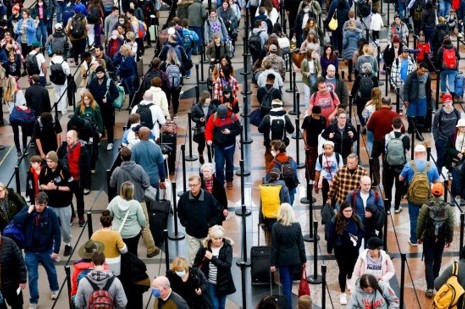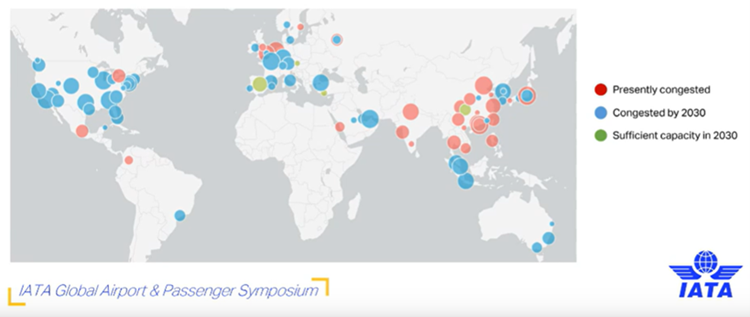
The aviation industry has experienced remarkable growth over the past decade, with air travel becoming more and more accessible and passenger numbers set to double in the next ten years. This surge in air travel poses significant challenges to current airport operations, particularly in terms of time-consuming processes that passengers must undergo before their flight, as the present capacity of airports cannot accommodate the projected growth.

To ensure a seamless and efficient travel experience, it is crucial to streamline and expedite key airport procedures. This article explores the processes that currently take up valuable time at airports and presents the innovative solutions that are going to revolutionize the way we travel.
Check-in agents have the complex and challenging task of verifying the authenticity of passengers’ travel documents, which is an essential step to ensure security. However, check-in agents often face time constraints due to the large volume of passengers they need to process within limited timeframes, and not enough knowledge of all types of travel documents and their unique security features. The limited time availability restricts their ability to thoroughly examine each document, increasing the chances of overlooking subtle irregularities or sophisticated forgery.
Leveraging biometric technologies such as facial recognition and fingerprint scanning can significantly expedite the passenger verification processes. Digital IDs linked to a secure database can seamlessly authenticate passenger information, reducing the need for manual document checks.
To address these challenges, IATA One ID introduces an opportunity for the passenger to streamline their journey with advance sharing of information and a contactless process at the airport based on biometric recognition. Passengers will be able to prove their identity prior to departure and then identify themselves at each airport touchpoint through a simple biometric recognition. Contactless travel aims to offer a consistent, smooth experience for passengers across airlines, airports, and governments.
Going through security has been for long time a bottleneck for passengers. While crucial for maintaining safety, the traditional methods employed can result in long lines and increased waiting times at the airport. Manual processes, such as removing personal belongings for individual screening and strict limitations on liquids, contribute to the time-consuming nature of these checks. Advancements in technology, such as advanced scanning machines like millimetre-wave and CT scanners, are improving the efficiency of security checks. These innovations enable faster and more comprehensive screening while maintaining stringent safety standards, ultimately providing a more seamless and expedited experience for passengers.
The conventional process of dropping off luggage involves lengthy queues and manual handling. Simplifying this step is crucial for reducing wait times, and the introduction of self-service bag-drop kiosks empowers passengers to independently handle their luggage check-in process. This automated system not only saves time, but also enhances accuracy and reduces human errors, improving overall operational efficiency.
Checking whether passengers' documents meet the requirements of their destination country is another time-intensive process that adds to the overall time at the airport. It involves verifying passports, visas, health certificates, and other relevant documentation to ensure compliance with immigration and travel regulations. The complexity of the regulations, coupled with the manual nature of this verification and potential for varying document formats and languages, contributes to delays and adds to the overall check-in time. Streamlining this process through automated document scanning and verification systems can significantly reduce the time and effort required to validate passenger documents, enhancing efficiency and improving the experience in the passenger journey.
This is the scope of the new version of Timatic Autocheck, which aims to simplify the document compliance checks by empowering airlines self-service check-in. Self and online check-in offer unparallel convenience and time-saving benefits: passengers can complete the process remotely and well in advance before their flight, eliminating the lines at airport check-in counters. This streamlines operations, reduces queues, and enhances operational efficiency for airlines that can then optimize resources and allocate personnel effectively while providing a better customer experience. By empowering travellers to verify that they are ready to fly in advance, airlines can offer a stress-free journey which will ultimately increase customer satisfaction and foster loyalty.
Carriers and DCSs are already onboarding to integrate the new Timatic Autocheck for automated pre-clearance and self-service checks on regulations, making the first step towards a sustainable growth for the whole industry.
In the dynamic and ever-evolving world of travel, we must act fast to streamline airport processes to meet the demands of this growing industry. By leveraging advancements in biometrics, digital IDs and self-service solutions that allow to reduce airport congestions, airlines can significantly reduce waiting times and enhance the overall travel experience for passengers. These innovations hold the promise of creating a seamless and efficient journey for passengers, ensuring that air travel remains a convenient and enjoyable mode of transportation for more and more travellers in the years to come.